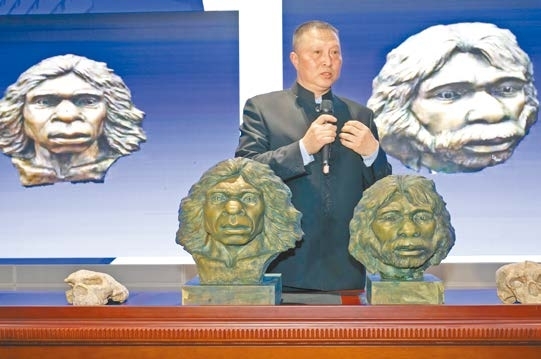
THE restored statues of a pair of fossil human skulls, dating back to 1 million years ago, have been recently unveiled by the Hubei Provincial Museum in central China. Two sets of ancient fossil human skulls were unearthed in 1989 and 1990 in Hubei Province. In 1994, Chinese paleoanthropologist Jia Lanpo named the fossils “Yunxian Man” after the location where they were excavated. The analysis concluded that the fossils belonged to Homo erectus and are roughly 1 million years old, and they were from a male and a female aged between 25 and 45. The brain volumes of the fossil skulls were 1,094 milliliters and 1,152 milliliters. A collaborative research team was established for the project, involving the Hubei Provincial Museum, Shanxi University, the Institute of Vertebrate Paleontology and Paleoanthropology under the Chinese Academy of Sciences, Wuhan University, and Beijing Union University. Professor Feng Xiaobo from the School of History and Culture at Shanxi University explained that the team scanned the two skull fossils using industrial-grade scanners and created precise models, adding details such as eyes, nose, mouth, ears, skin, and hair to recreate the cranium’s appearance in life through sculpting, painting, and computer imaging techniques. He emphasized that the facial reconstruction of the “Yunxian Man” skull fossils was the world’s first scientific facial reconstruction of ancient human skull fossils dating back approximately a million years, offering significant reference value for similar reconstructions of ancient human fossils. The “Yunxian Man” fossil human skulls are the most complete ones found in Eurasia for the same era, providing key evidence for the study of the evolution of Homo erectus in East Asia, according to the Science and Technology Daily. (Xinhua, SD-Agencies) | 
